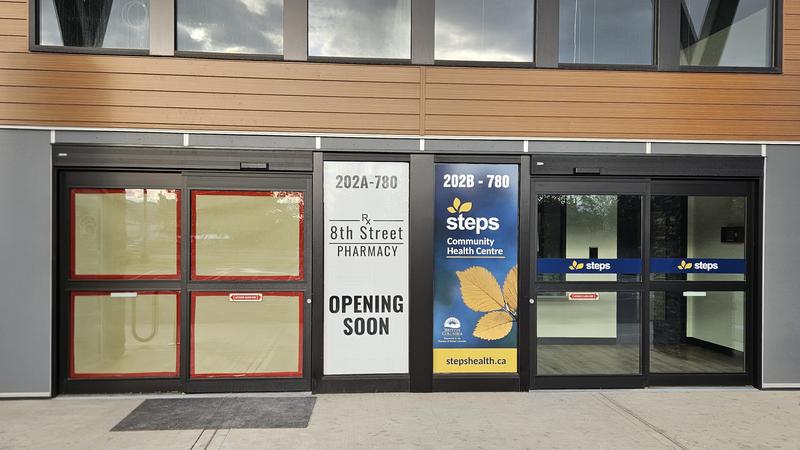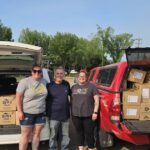I still remember the day my neighbor Sylvia invited me over for tea after her last appointment at the downtown Kamloops clinic. Nearly 70, with arthritis making each step a challenge, she described the three buses she took to see her doctor, the hour-long wait in an overcrowded waiting room, and how she sometimes postponed care because the journey felt overwhelming.
“It shouldn’t be this hard just to get my blood pressure checked,” she told me, stirring honey into her cup.
Stories like Sylvia’s are why the announcement of a new community health clinic at Cooper Centre in North Kamloops feels like more than just another healthcare facility opening. For thousands of residents in this rapidly growing interior B.C. community, it represents a fundamental shift in how healthcare will be delivered to an area that has long struggled with access.
The clinic, set to begin operations in early August, will occupy the recently renovated second floor of the Cooper Centre and aims to address critical gaps in primary care that have left many Kamloops residents without consistent healthcare support.
“This isn’t just about putting doctors in a new building,” explains Dr. Hannah Mehta, who will serve as the clinic’s medical director. “We’re creating a healthcare home where people can establish relationships with providers who understand their needs and their community.”
The new North Kamloops facility emerges as British Columbia continues to grapple with a healthcare provider shortage that has left nearly one in five residents without a family doctor. According to data from the B.C. College of Family Physicians, the Thompson-Cariboo region has seen a 12% decline in family physicians over the past five years, while the population has grown by approximately 8%.
What sets this clinic apart is its team-based approach. Rather than the traditional model where patients see only a physician, the Cooper Centre clinic will integrate nurses, nurse practitioners, social workers, and mental health counselors who work collaboratively to address a patient’s needs.
“When healthcare providers work as a coordinated team, patients receive more comprehensive care,” says Anita Rathore, Executive Director of Primary Care Services for Interior Health. “A patient might initially come in for physical symptoms, but our team can identify and address underlying issues like food insecurity or mental health challenges that impact their overall wellbeing.”
The clinic’s location in North Kamloops is strategic. Census data reveals that this area has a higher concentration of seniors, newcomers to Canada, and families living below the median income compared to other parts of the city. These demographics often face the greatest barriers to healthcare access.
Last week, I walked through the still-empty clinic spaces with project manager Kevin Phillips. The newly installed automatic doors, wheelchair-accessible examination rooms, and culturally inclusive waiting areas reflect an intentional design focused on accessibility.
“We’ve worked closely with local Indigenous communities to ensure the space feels welcoming to everyone,” Phillips explained, showing me wall spaces reserved for artwork from Tk’emlúps te Secwépemc artists. “Healthcare isn’t just about medical procedures—it’s about creating environments where people feel seen and respected.”
For Dr. Mehta, who previously worked at a community health center in East Vancouver, the team-based model represents healthcare’s future. “The days of the solo family physician trying to meet all needs are behind us,” she tells me as we discuss the clinic’s approach. “Complex care requires collaboration, and that’s what we’re building here.”
The clinic will initially serve approximately 5,000 patients, with priority given to those without current primary care providers and those with complex needs. Interior Health estimates that the facility could eventually support up to 10,000 patients as staffing increases.
City Councillor Michelle Rowed, who advocated for the project, sees the clinic as part of broader revitalization efforts in North Kamloops. “Healthcare access is a cornerstone of a thriving neighborhood. When people can receive care close to home, it strengthens the entire community.”
The $3.2 million project received funding through the Ministry of Health’s Primary Care Network initiative, with additional support from the Thompson Regional Hospital District. While the physical space is complete, recruitment efforts continue for additional healthcare providers.
Dr. Michael Sandhu, who completed his residency at Royal Inland Hospital and will join the clinic’s team, believes the collaborative model will help address physician burnout while improving patient outcomes.
“Many new physicians are specifically seeking team-based environments,” he explains. “Working alongside nurses, social workers, and other professionals allows each of us to practice at the top of our scope while providing more comprehensive care than any of us could deliver alone.”
For residents like Carrie Wong, a mother of three who has been without a family doctor since her previous physician retired two years ago, the clinic can’t open soon enough.
“I’ve been using walk-in clinics and the emergency room when my kids get sick,” Wong told me when I met her at a community information session about the new facility. “There’s no continuity of care, and I’m constantly retelling our medical history to different providers. Having a healthcare team that knows us would change everything.”
The clinic will begin accepting patient registrations in mid-July through a centralized intake system. While demand will likely exceed capacity initially, clinic administrators have developed a transparent prioritization process based on medical need rather than first-come, first-served.
As Kamloops continues to grow, with projections suggesting the population could increase by another 15% by 2030, innovations like the Cooper Centre clinic represent essential infrastructure for community wellbeing.
When I called Sylvia to share news of the clinic opening just blocks from her home, her relief was palpable. “Maybe I’ll finally get that blood pressure checked,” she laughed.
For thousands of Kamloops residents, healthcare is about to get a lot closer to home.






